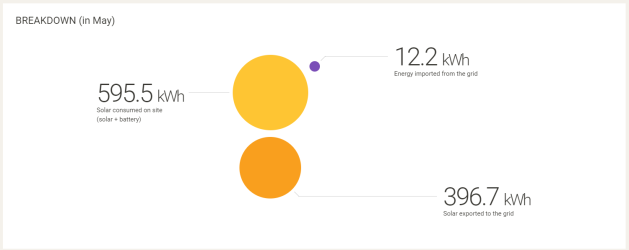Its actually two pumps and the chlorinator. One pump for the main filter and pool circulation and one for the pool solar hearing that pumps to the heating tubes on the second story roof. They are not variable speed. The heating pump does cycle on/off as needed. Normally this time of year the heating is in "Winter Mode" where it only comes on for about 5 mins each day, just to keep the pipes and pump "wet". But our son is hosting a party here soon and has asked that the pool be available to use, so I have not put it into winter mode yet - it will be way too cold for me to get in! Water temp yesterday was 27 degrees, and three degrees below my entry point

.
Main pump and chlorinator pulls around 4 Amps (apprx 1kW) and solar pump around 3 Amps. So together they are a little under 2kW when operating. I'll check the actual figures when they start up today. Its overcast here at the moment, so generation has not reached 4kW so hot water is unlikely to trigger from that today and will activate at 10:30am, so pool pumps likely around 11:30am at the conclusion of hot water heating requirement.
Also we have recently laid some new turf, so the rainwater tank pump has also been running in the afternoon keeping that soaked.






